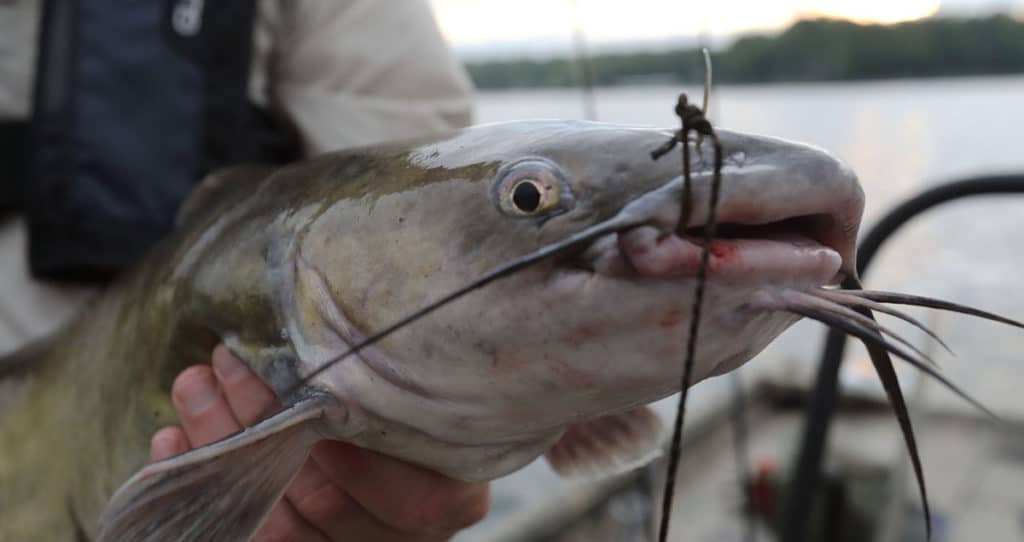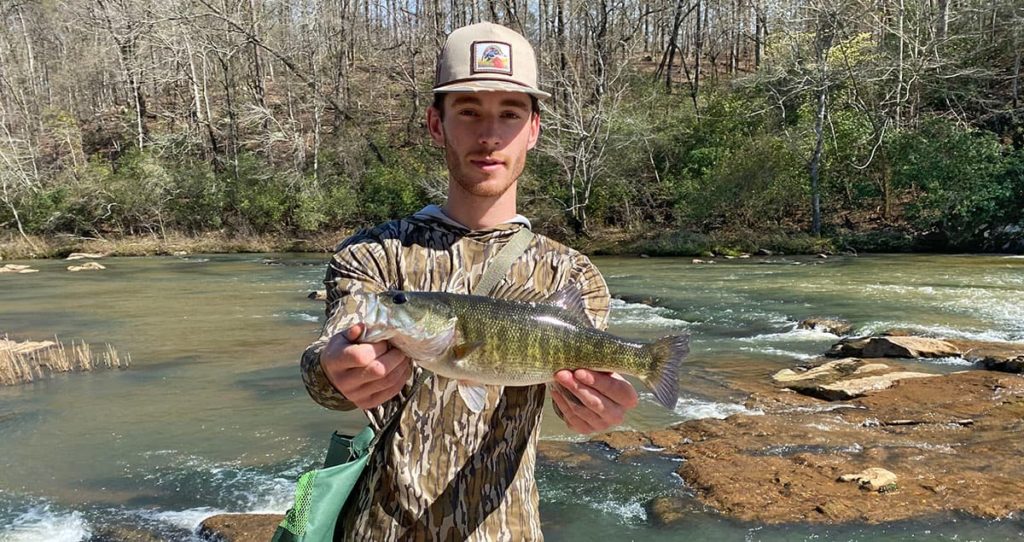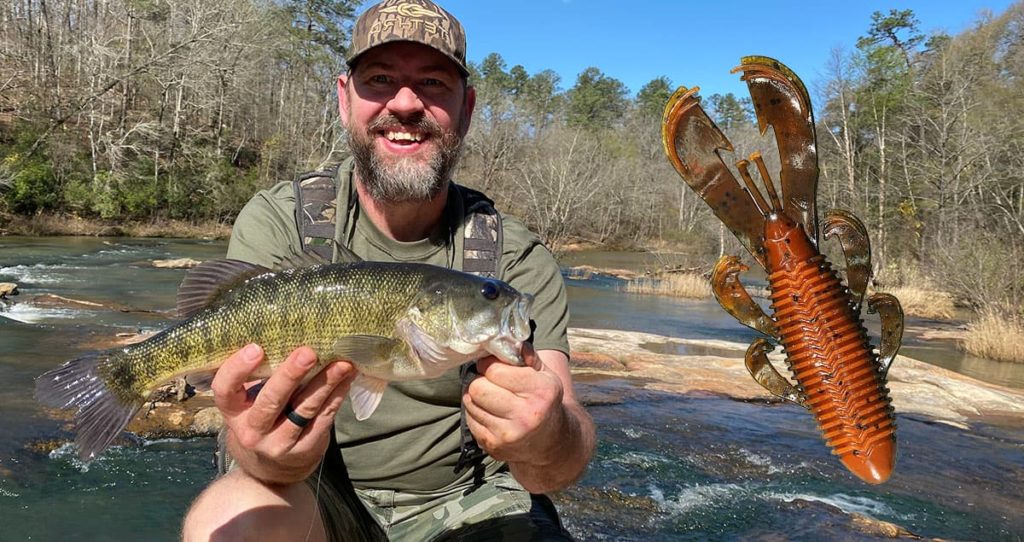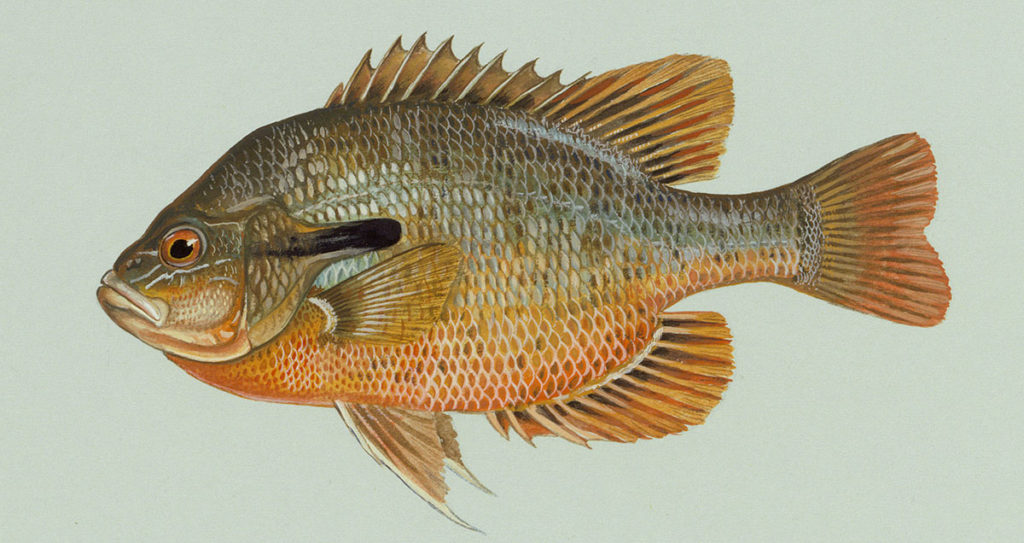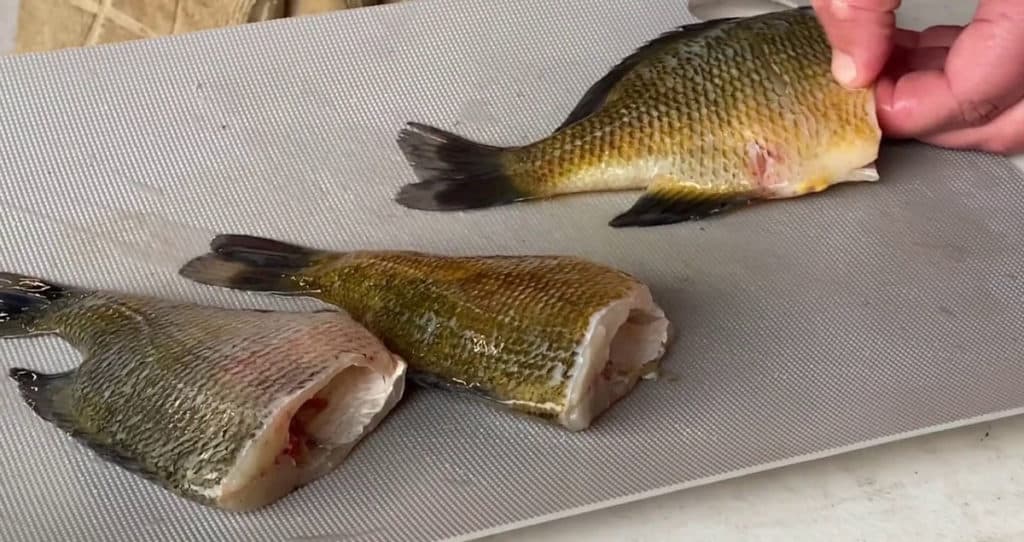Most of the time, bluegill are pretty easy to catch. It’s what I love most about fishing for them. But every once in a while, even the bluegill won’t cooperate, and I’m often left wondering if I’m fishing in the wrong spot or just not fishing the right depth. Even the best bluegill spots won’t produce if your bait is the wrong depth, which begs the question, how deep should I fish for bluegill?
In most cases, fishing for bluegill in two to five feet of water will provide the best results.
However, that’s going to vary based on a few factors. The first of those is the time of year. Another factor is the overall depth of the water you’re fishing and whether there is a thermocline present (more on that below). And lastly, the available structure and terrain can impact where bluegill hang out.
What is Thermocline?
As the water of a lake warms up in the spring and summer months, the lake develops three distinct layers. The warmer water at the top, cooler water on the bottom, and a middle layer where the warm and cool water mixes together. That middle layer is the thermocline. I won’t get into the science of it all, but the deeper, cooler water tends to get low in available oxygen, forcing fish to stay in or above the thermocline.
Now let’s take a look at seasonal variations in bluegill fishing depth so you can put the most bluegill in your fish basket.
Best Depth by Season
Spring and Early Summer
During the spring and most of summer, bluegill are spawning. During that time, the fish create beds in shallow water, which the males aggressively defend. During that time, fishing at any depth, from a topwater bait to a worm sitting on the bottom, can be effective. If you’re using live bait, then I would recommend figuring out how deep the water is where the beds are (more on that below), and fish just a few inches off the bottom.
If you’re using a lure, then you have the luxury of trying different depths with each cast until you find the sweet spot. I recommend starting working the lure close to the bottom and working your way up until they start hitting it.
Late Summer
As the spawn winds down mid-summer, bluegill often move to deeper waters. How deep they go depends on the depth of the body of water you’re fishing and the thermocline. You typically want to fish near the bottom, but right at or just above the thermocline. Unfortunately, finding the thermocline requires trial and error.
A good starting point for summer bluegill is in 10-20 feet of water.
Tip: How to Find the Water Depth
It can be difficult to know how deep to fish when you don’t know how deep the water is you’re fishing. If you’re in a boat with a depth finder, then that’s easy enough to figure out. If you’re fishing from the bank, it takes a little more work. Don’t worry, though. It’s still pretty simple if you have a stand-up style bobber.
Put a split-shot weight on your line heavy enough to stand the bobber up. Set your bobber at a depth that you think will leave your hook and weight on the bottom. Cast it out where you want to fish and watch your bobber. If it doesn’t stand up, you know you’re weight is on the bottom. Reel in your line and adjust the bobber to a slightly shallower setting. Repeat the process until your bobber stands up like it should. At that point, you’ll know you’re fishing just off the bottom in that location.
Fall
As water temperatures start to decrease in the fall, bluegill will head back to shallow waters. They may not be quite as shallow as they were during the spawn, but you should be able to find them in around five to 10 feet of water. Look for areas with structure like the edge of weed beds, or brush and standing timber.
Winter
The cold temperatures of winter have bluegill seeking the deeper waters of creek and river channels, the edges of bluffs or deeper holes of your favorite farm pond. Because insects aren’t available this time of year, their diet shifts to bottom-dwelling invertebrates like worms and insect larvae. To take advantage of this food shift, you’ll want to keep your bait near the bottom. Like other times of the year, bluegill will be holding tight to various types of cover to avoid becoming a meal for a hungry bass or catfish.
For more season bluegill fishing tips, check out our article The Absolute Best Times to Catch Bluegill.
Tip: Testing Two or More Depths at Once
If you’re having trouble catching bluegill in an area where you know they should be, here’s a great trick to help you find the right depth to catch them. You can tie multiple hooks on your line at varying depths and bait them all! Keep the hooks spaced out at least a foot apart, and when you start catching fish, pay attention to which hook or hooks they are on. Once you have an idea of the depth, you can go back to a single hook, or just continue to bait the hook at the right depth.
Summary
Finding the right depth to fish for bluegill can be the difference between a slow day of fishing or a stringer full of big bluegill for your next fish fry. If the bite is slow, take into consideration the time of year and the overall depth of the water you’re fishing, and adjust your fishing depth accordingly. It may take a little trial and error, but if you keep at it, you’ll eventually find the depth that is most productive.

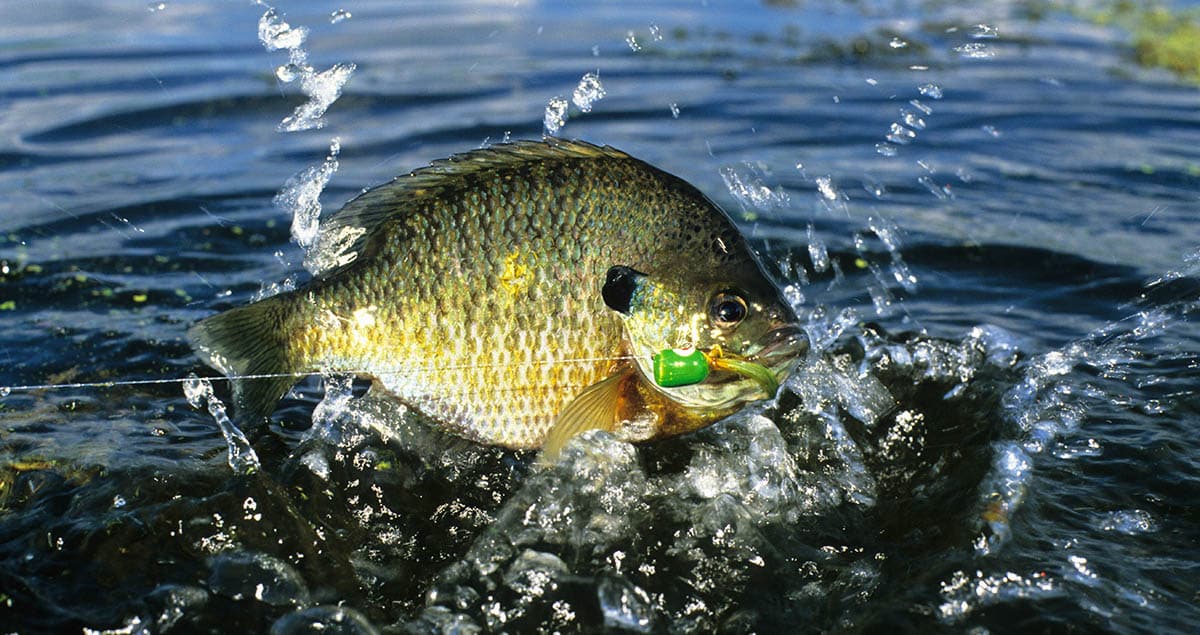
![Are Bluegill Good to Eat? [Answered]](https://getoutdoorssouth.com/wp-content/uploads/2022/10/are-bluegills-good-to-eat-1024x542.jpg)
